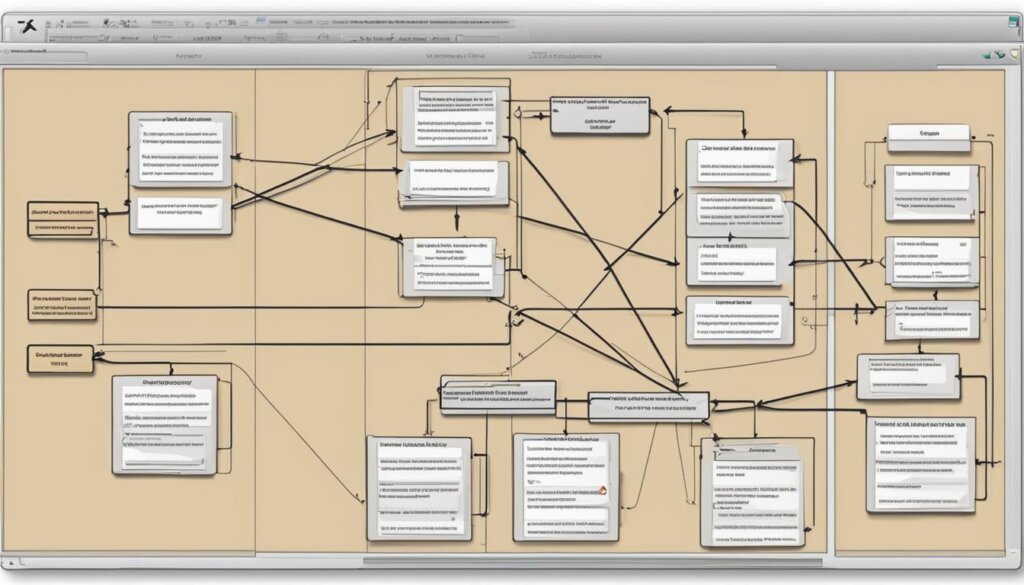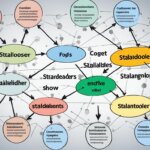Table of Contents
A use case is a crucial component in system design and software development. It provides a written description of how users will interact with a website or system, outlining the sequence of steps required to achieve specific goals. Use cases help explain how a system should behave and can effectively identify potential issues.
When creating a use case, various elements are included, such as actors, stakeholders, preconditions, triggers, main success scenarios, and alternative paths. These elements help establish the cost and complexity of a system, allowing for better planning and decision-making.
By understanding use cases, developers and design teams can ensure that systems are created to meet user needs, providing a seamless and efficient user experience.
Benefits of Use Cases
Use cases in system design offer several benefits that contribute to the success and effectiveness of a project. By providing a comprehensive understanding of system behavior, use cases serve as a valuable tool to explain how a system should function. This clarity reduces the chances of miscommunication and helps the development team stay aligned with stakeholders’ expectations.
One of the key advantages of use cases is their ability to brainstorm potential problems that may occur during the development process. By outlining the sequence of steps a user takes to achieve a specific goal, use cases facilitate the identification of potential bottlenecks, usability issues, or technical challenges that need to be addressed.
Moreover, use cases provide a structured framework for gathering customer requirements. By modeling the goals of system-user interactions, they offer a clear understanding of the desired outcomes and functionalities. This allows project teams to organize functional requirements effectively and prioritize them based on their importance and impact on the overall system design.
Additionally, use cases play a crucial role in determining the cost and complexity of a system. By presenting a list of goals and functionalities, use cases enable project teams to evaluate the resources required for implementation. This information is invaluable when it comes to making decisions on prioritization and negotiating which functions become requirements.
An important benefit of use cases is their compatibility with the quality assurance process. Use cases can be easily transformed into test cases, enabling thorough testing of the system’s functionality and identifying any potential issues or bugs. This integration between use cases and testing ensures high-quality software development and a seamless user experience.
In summary, the benefits of use cases in system design are vast. From explaining system behavior to organizing requirements and guiding testing efforts, use cases contribute to an effective and successful project. By providing a holistic view of the system’s intended functionality, use cases serve as a valuable tool for stakeholders, developers, and testers alike.
How to Write a Use Case
Writing a use case involves several steps. First, identify the users who will interact with the system and their goals. Each user goal becomes a separate use case. Describe the normal flow of events for each use case, including what the user does and how the system responds. Consider alternate courses of events and add them to extend the use case. Look for commonalities among use cases and create common course use cases. Repeat these steps for all other users. Use narrative language to describe the steps and consider using a sequence diagram to show interactions between objects.
When writing a use case, it is important to have a clear understanding of the users who will be using the system. Identify their goals and objectives, as this will help define the scope and purpose of each use case. By defining the user goals, you can create use cases that address specific user needs and requirements.
Once you have identified the user goals, describe the normal flow of events for each use case. This involves outlining the steps that the user takes to achieve their goal and how the system responds to each action. Provide clear and concise descriptions of each step, ensuring that they are easy to understand and follow.
In addition to the normal flow of events, consider alternate courses of events that may occur within each use case. These alternate paths represent different scenarios and exceptions that users may encounter. By incorporating these alternate courses of events, you can create comprehensive use cases that cover a range of user interactions.
While writing use cases, look for commonalities among different use cases. Identify similarities in user goals or steps within the normal flow of events. By finding commonalities, you can create common course use cases that consolidate similar functionality and avoid duplicating efforts.
Repeat these steps for all other users who will interact with the system. Each user and their corresponding goal should have a separate use case. By addressing the needs of all users, you can ensure that the system design caters to a diverse range of user requirements.
Throughout the use case document, use narrative language to describe the steps and interactions between the user and the system. This helps stakeholders understand the user’s journey and visualize how the system will fulfill their needs.
To further enhance the clarity of your use case, consider using a sequence diagram. This visual representation shows the interactions between objects and the order in which they occur. Sequence diagrams provide a clear overview of the system’s behavior, making it easier to understand and validate.

Writing effective use cases is a crucial step in system design. By following these steps and utilizing narrative language and diagrams, you can create comprehensive use cases that capture user goals and system behavior.
Characteristics of Use Cases
Use cases are an essential component of system design, providing a detailed description of the functional requirements from the perspective of end users. They serve as a roadmap, outlining a goal-focused sequence of events that is easily understandable for both users and developers. By organizing functional requirements and modeling system-user interactions, use cases play a crucial role in ensuring the successful development of a system.
Main Success Scenario and Alternative Flows
A complete use case consists of a main success scenario, also known as the basic flow, and various alternative flows. The main success scenario describes the ideal sequence of steps leading to the achievement of the user’s goal. Alternative flows, on the other hand, address variations on the main theme and handle exceptions when things deviate from the expected path.
“Use cases provide a comprehensive understanding of how a system should behave, allowing developers to anticipate potential issues and devise appropriate solutions.”
Paths from Trigger Events to Goals
In addition to the main and alternative flows, use cases record the paths from trigger events to goals. Trigger events are the actions or events that initiate the use case, while goals represent the desired outcomes. Understanding these paths is crucial in designing a system that accurately reflects user needs and expectations.
Describing Main Flow and Alternative Flows
Use cases are written in a narrative format, describing both the main flow and alternative flows in a clear and concise manner. The main flow outlines the steps the user takes to accomplish their goal, while the alternative flows cover different scenarios and potential deviations from the main flow. This comprehensive approach ensures that developers have a complete understanding of all possible user interactions with the system.
Multilevel Use Cases
Use cases can also exist at different levels of hierarchy, with one use case utilizing the functionality of another. This multilevel approach allows for a modular design, making the system more manageable and scalable.
| Characteristics of Use Cases | Benefits |
|---|---|
| Describe functional requirements | Help explain system behavior |
| Model system-user interactions | Organize functional requirements |
| Record paths from trigger events to goals | Facilitate identification of potential issues |
| Include main success scenario and alternative flows | Aid in determining cost and complexity of the system |
| Enable multilevel design | Provide a modular and scalable approach |
Use Case vs. User Story
When it comes to system design, both use cases and user stories play a crucial role in describing system-user interactions and goals. However, they serve different purposes and offer unique insights.
Use cases are more specific and focus on how a system will act. They provide a detailed narrative description of the steps users take and how the system responds. This makes use cases easily understood by stakeholders and enables effective communication and collaboration. Use cases help define the scope of a project, bridge the gap between business justification and technical requirements, and communicate the overall strategy.
On the other hand, user stories are more abstract and focus on the result of activities and the benefits derived from the process. User stories are less documented and are often used in agile development. They are built around conversations and serve as a way to capture requirements and gather feedback from stakeholders and end users. User stories allow for flexibility and adaptation, providing a dynamic approach to system design.
In summary, while both use cases and user stories are valuable in system design, they have distinct purposes. Use cases provide specific, detailed descriptions of system behavior, while user stories offer a more abstract, result-oriented perspective. By leveraging both approaches, software developers can create comprehensive and robust systems that meet the needs of users and stakeholders alike.
FAQ
What is a use case?
A use case is a written description of how users will perform tasks on a website or system. It outlines the sequence of steps a user takes to achieve a specific goal.
Why are use cases beneficial in system design?
Use cases help explain system behavior, brainstorm potential problems, determine the cost and complexity of a system, prioritize functions, organize functional requirements, model system-user interactions, gather customer requirements, and create test cases for quality assurance.
How do you write a use case?
Writing a use case involves identifying users and their goals, describing the normal flow of events, considering alternate courses of events, looking for commonalities among use cases, and using narrative language to describe the steps.
What are the characteristics of use cases?
Use cases should organize functional requirements, model system-user interactions, record paths from trigger events to goals, describe the main flow and alternative flows, and can be multilevel.
What is the difference between a use case and a user story?
Use cases are more specific and focus on how a system will act, while user stories are more abstract and focus on the result of activities and the benefit derived from the process. Use cases are often written in narrative language and are used to communicate strategy, bridge the gap between business justification and technical requirements, and define the project’s scope.













